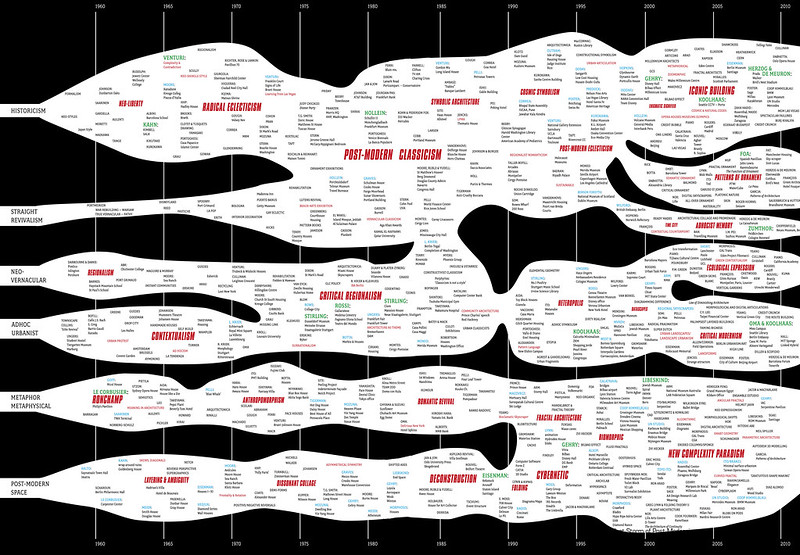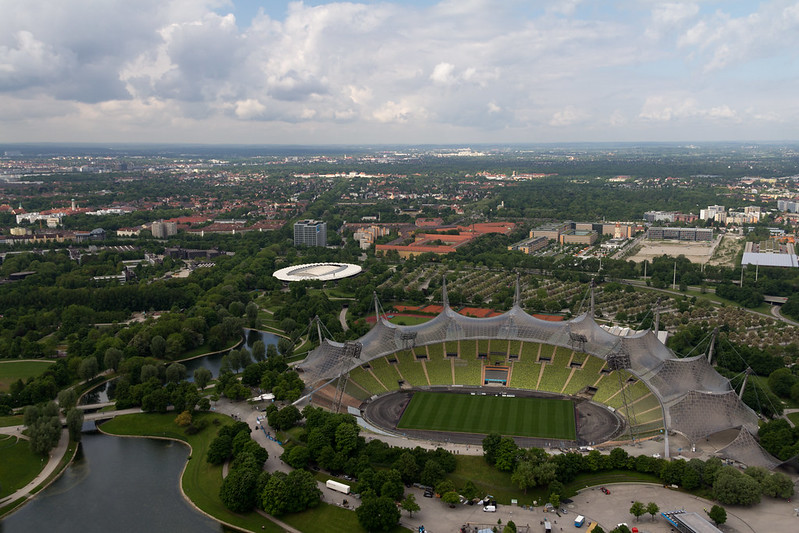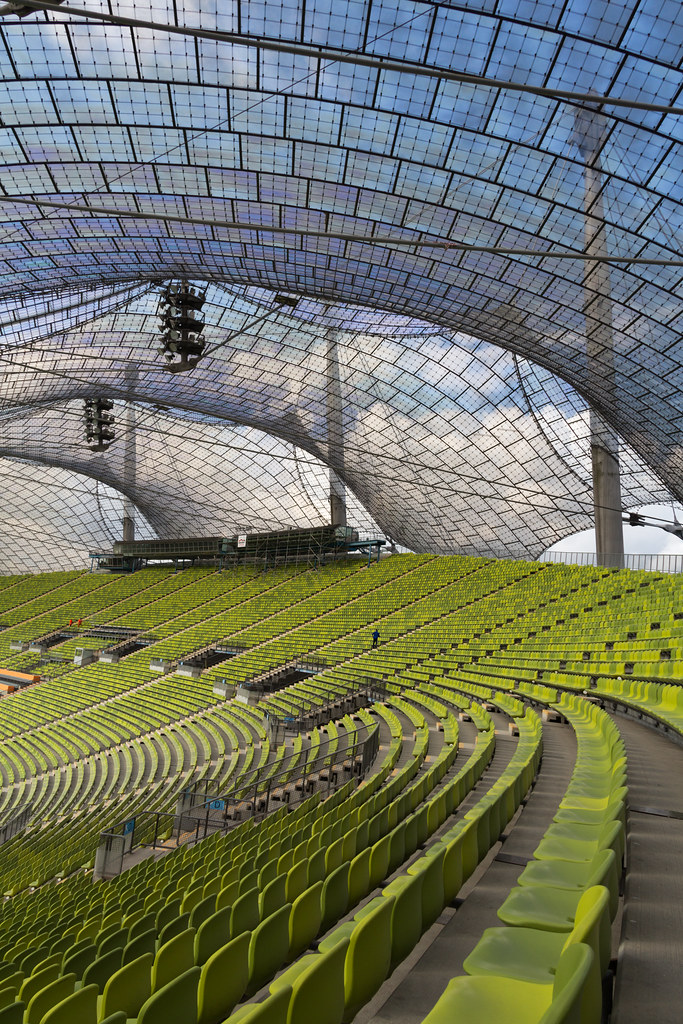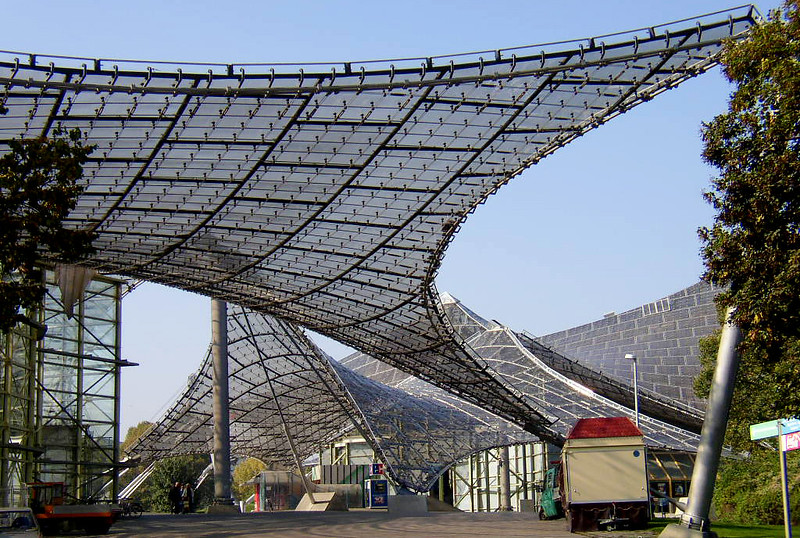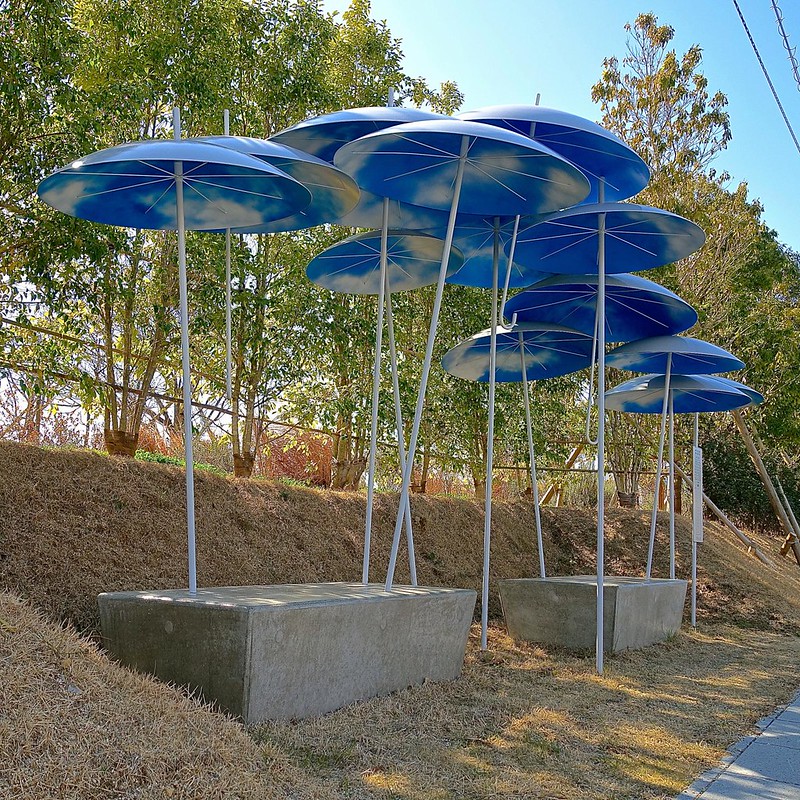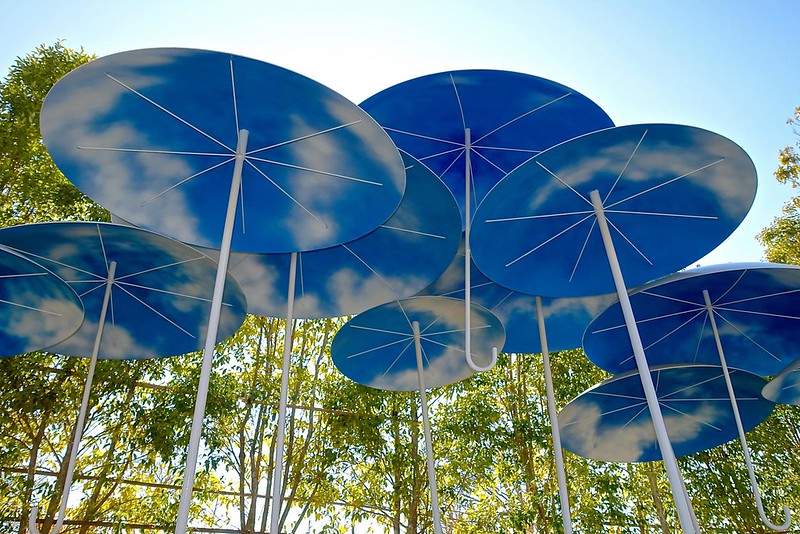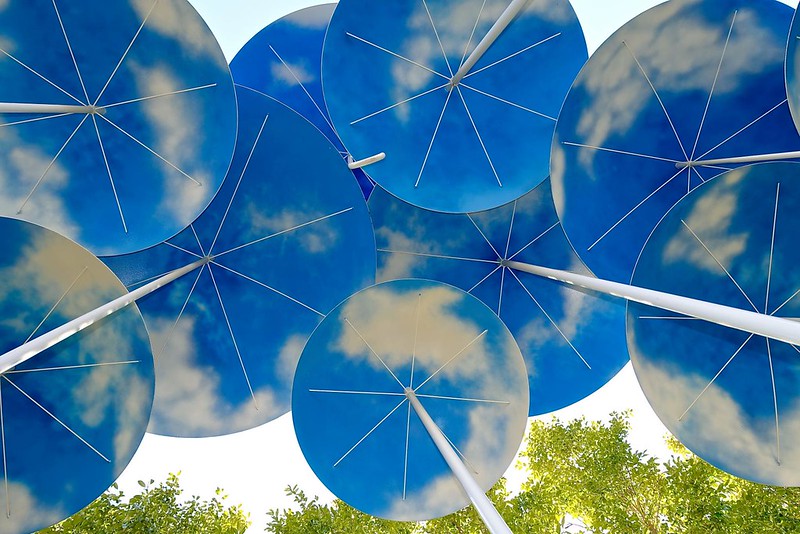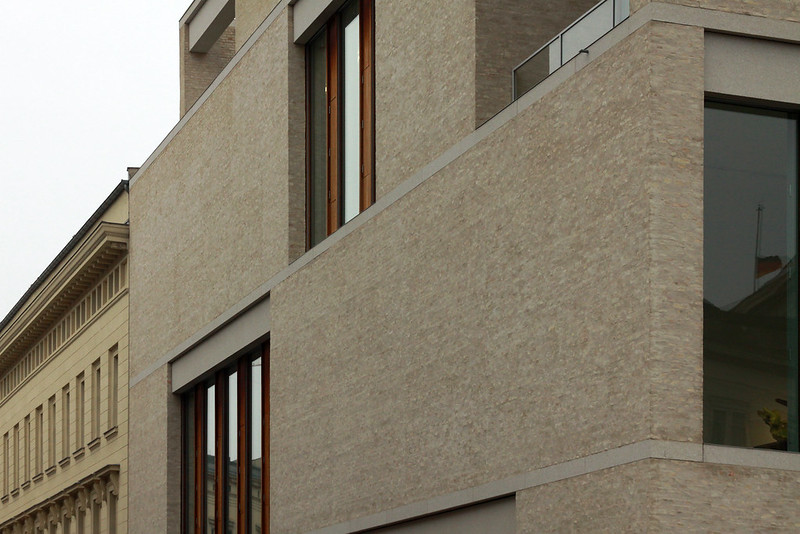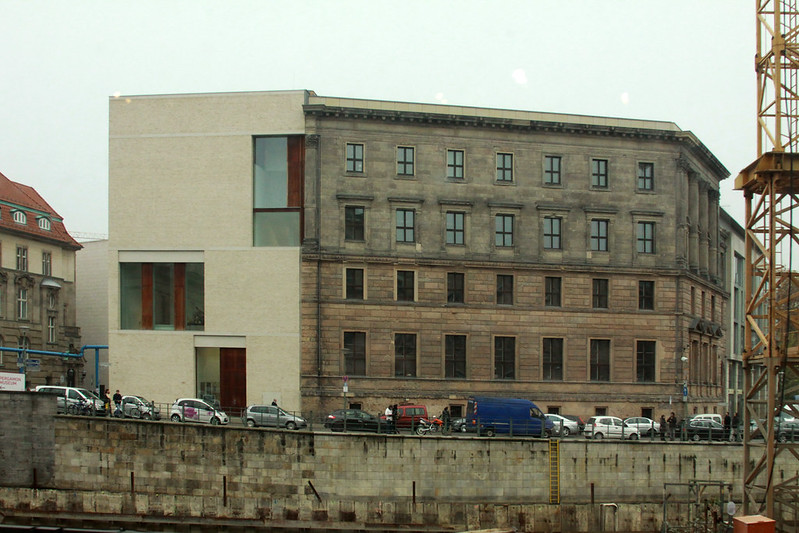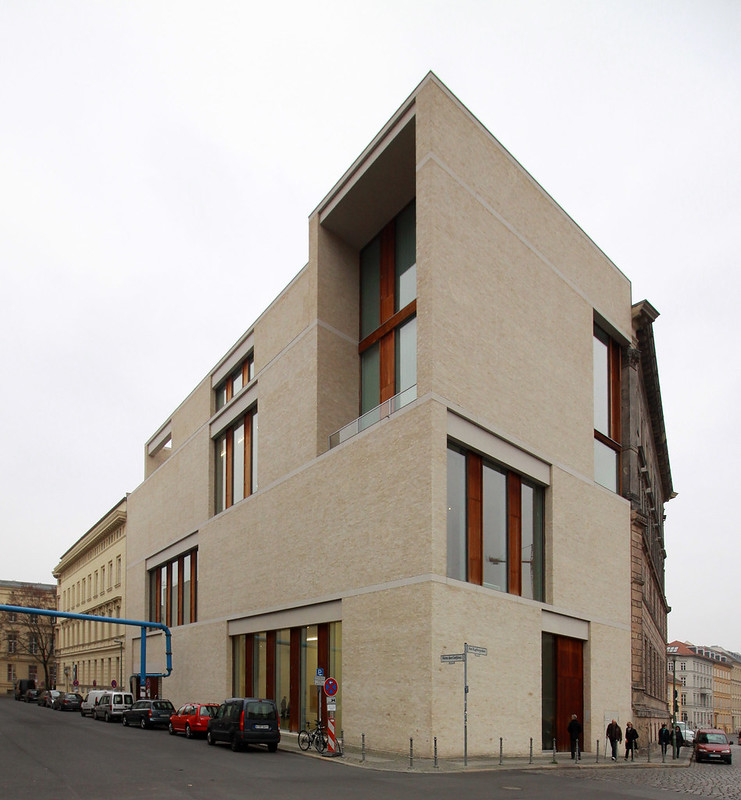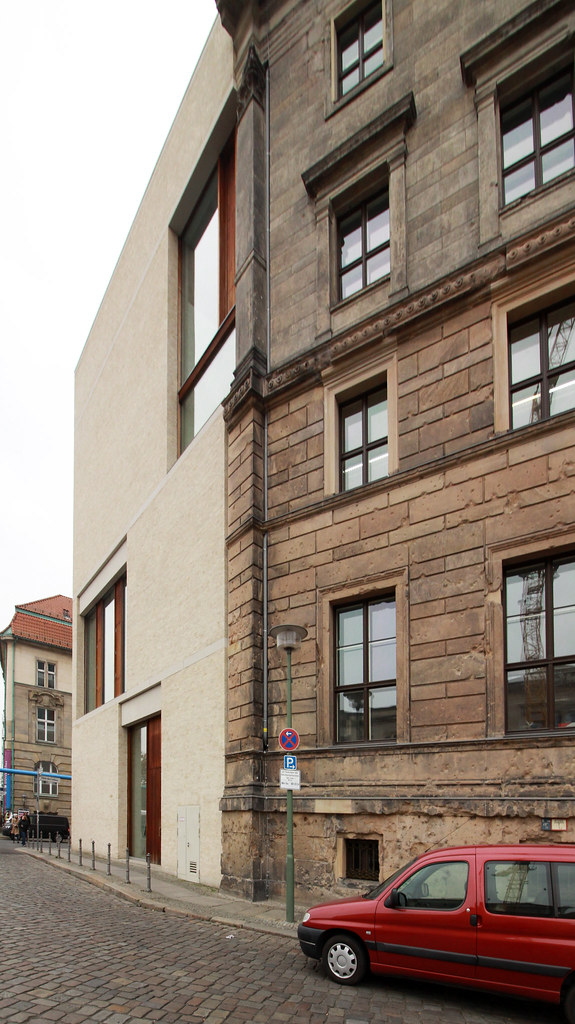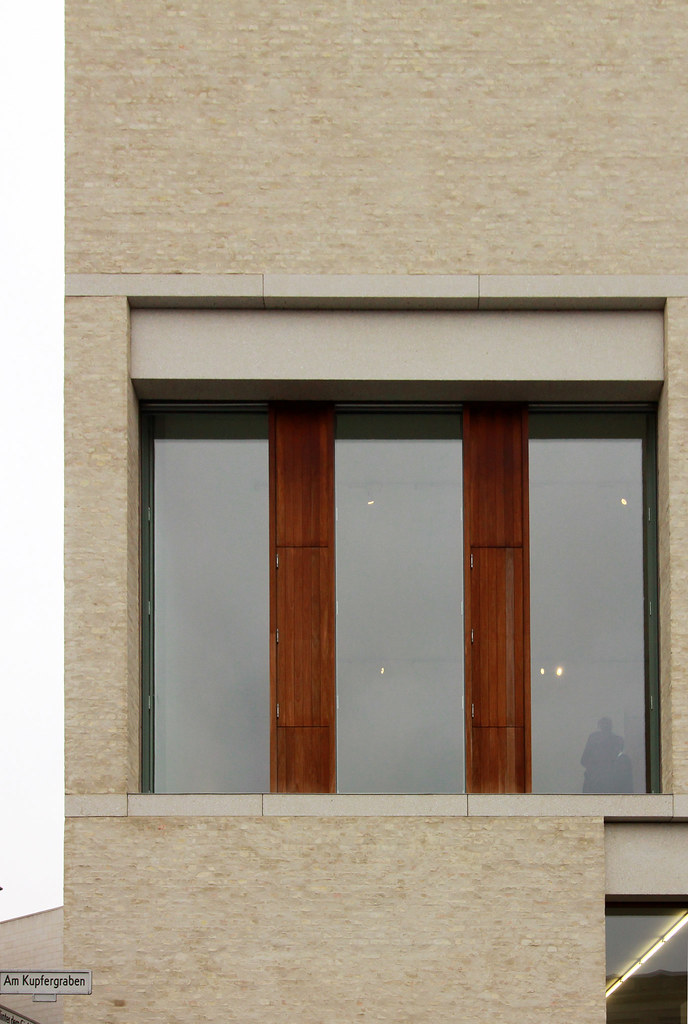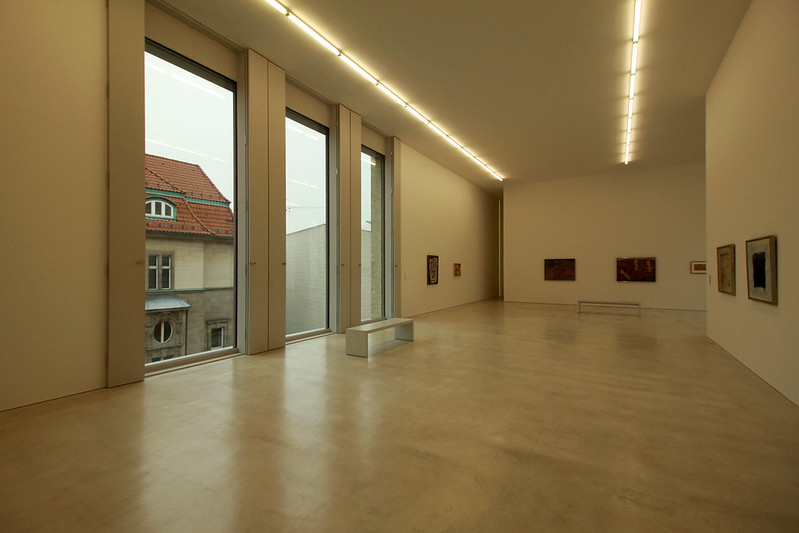The title equation "New York City minus crowds equals Richard Estes" is not absolute when it comes to the work of painter Richard Estes, but it's something that comes to mind when seeing the works collected in the exhibition
, Richard Estes: Painting New York City, opening today at the Museum of Arts and Design (MAD). Here is but the most obvious example, where Estes painted an empty D Train on its way into Manhattan from Brooklyn (or is it vice-versa?):

[D Train, 1998]
In other paintings, be they earlier or later than the one above, people appear, but rarely to the extent one would expect when Manhattan is the subject. Columbus Circle, in 2009 after MAD opened in its Allied Works-designed container and the landscaped center was redesigned by Laurie Olin, was a bustling place, even in winter, as it was during yesterday's press preview. But in Estes' painting the sidewalk is empty and the only figures are those reflected in the glass storefront of the MAD building:

[Columbus Circle Looking North, 2009]
Before a lack of crowds, which has a reasoning I will get to, the overriding feature of Estes paintings is reflectivity, which arises from the subjects he paints (the city at the level of the pedestrian) and the fact he photographs his compositions. Yet the latter does not make his work photo-realist (exhibition curator Patterson Sims described it as "photo-derived"), since the reflections take on an other-wordly quality in his paintings, indicative of how he transforms his photos into paintings in an indirect manner.
Take the below painting,
Horn & Hardart Automat, as an example. The reflections at the top of the painting are so strong that they prevail over the interior, which is marked by a few light pendants; but down below the seated figure inside the cafeteria takes precedence over the reflected exterior. Some of this can be chalked up to values of light and dark
on the city street, but I'd wager much of it is based on the artist's intentions, in which he portrays an inner reality rather than a semi-objective reality found in the camera. Seeing the building elevations across the street and the figure inside the cafeteria equally in the painting is a reflection of the mental ability to see both even if it wouldn't happen in one gaze.

[Horn and Hardart Automat, 1967]
The way Estes picks and chooses the "realities" from his photos is clearest in the below photo of the Plaza Hotel at the southeast corner of Central Park. First, the view through the bus window on the right doesn't have any trace of reflection, which anybody riding a bus (or even a car) would know to be impossible. Second, the two figures on the far left are actually the same person in two poses, assembled by Estes from different photos. And third, the view outside the bus on the left is farther down Fifth Avenue than 60th Street. The first is fairly obvious, but number two and three are pretty subtle things that serve the painting's overall composition.
What is also apparent about this photo is the number of people, which is much greater than other Estes paintings. Compare it with the
D Train painting at top, which features an empty train car.
The Plaza would indicate that Estes likes crowds, but I'd argue that in each case – in all cases – his decisions are about composition. In the case of
The Plaza, he is balancing the people on the bus with the people outside; in the case of the
D Train, the empty car is the best means of balancing the empty East River.

[The Plaza, 1991]
One more thing I'd like to say about Estes' painterly depictions of reality via photography is that, even though they are not traced over the snapshots that capture a particular time, his paintings exist like time capsules. Again this is related to his subject matter, since his scenes of Manhattan's public realm depict the changing fashions of cars, clothes and architecture. Even the Guggenheim Museum (1959) is captured in time, since he painted it before the Charles Gwathmey-designed addition (1992), and at a time when the exterior skin exhibited the cracks that would be repaired
decades later:
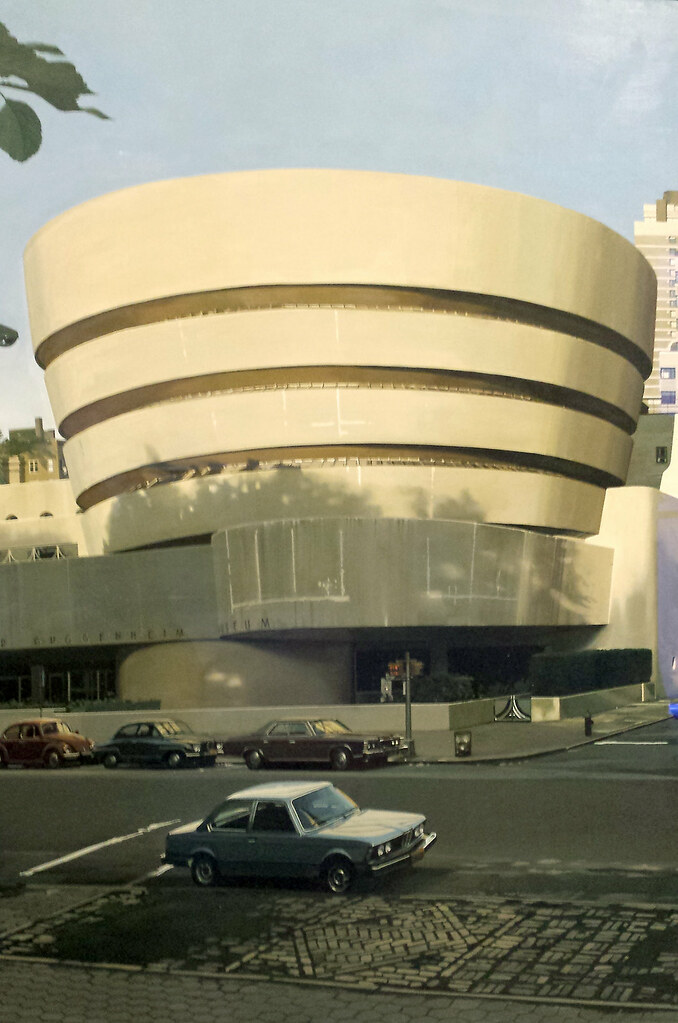
[Detail of
The Solomon R. Guggenheim Museum, summer 1979 | Photo: John Hill]
Richard Estes: Painting New York City runs until September 20, 2015. Here are a few of my cameraphone photos from yesterday's preview of this highly recommended show.

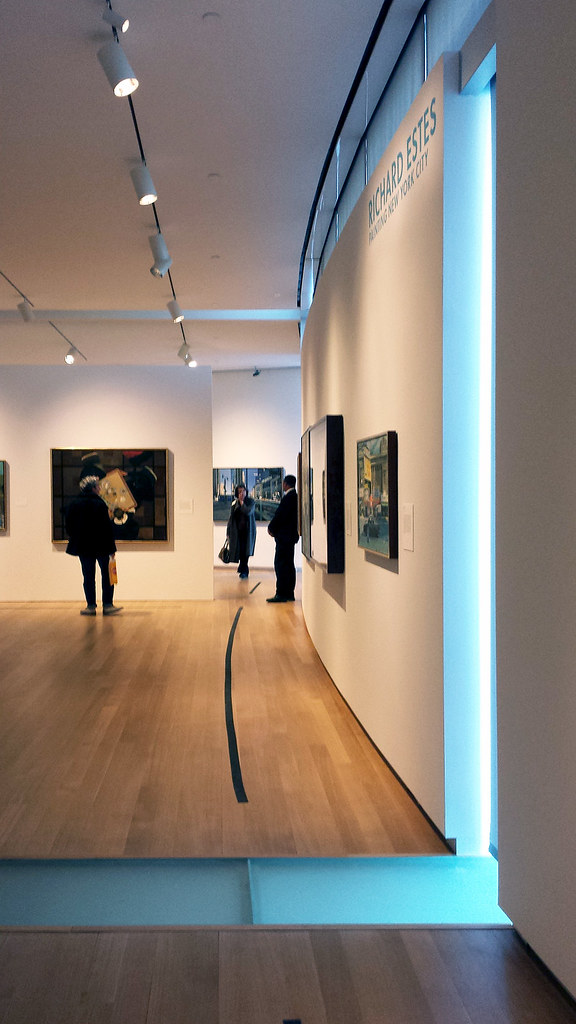
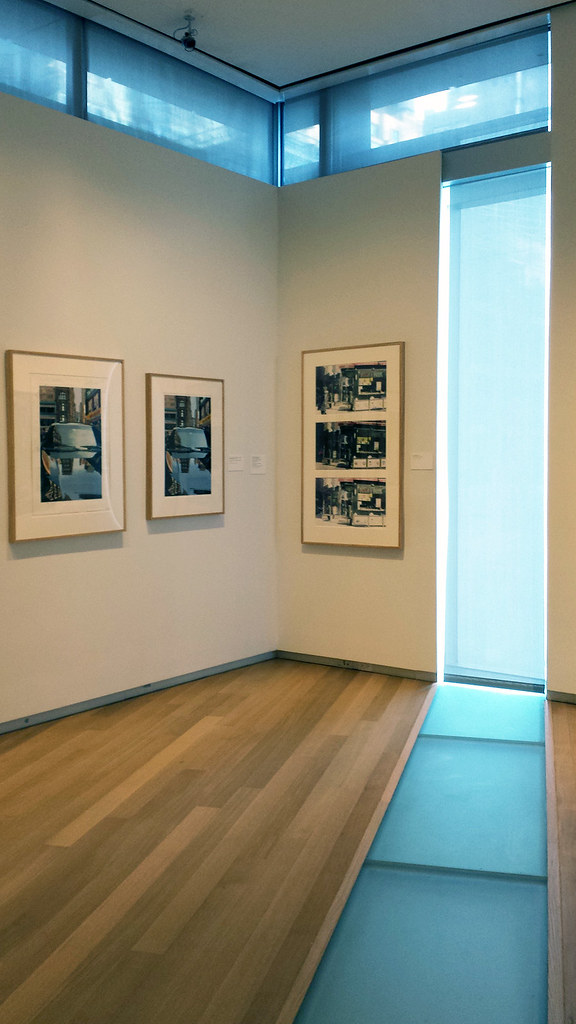
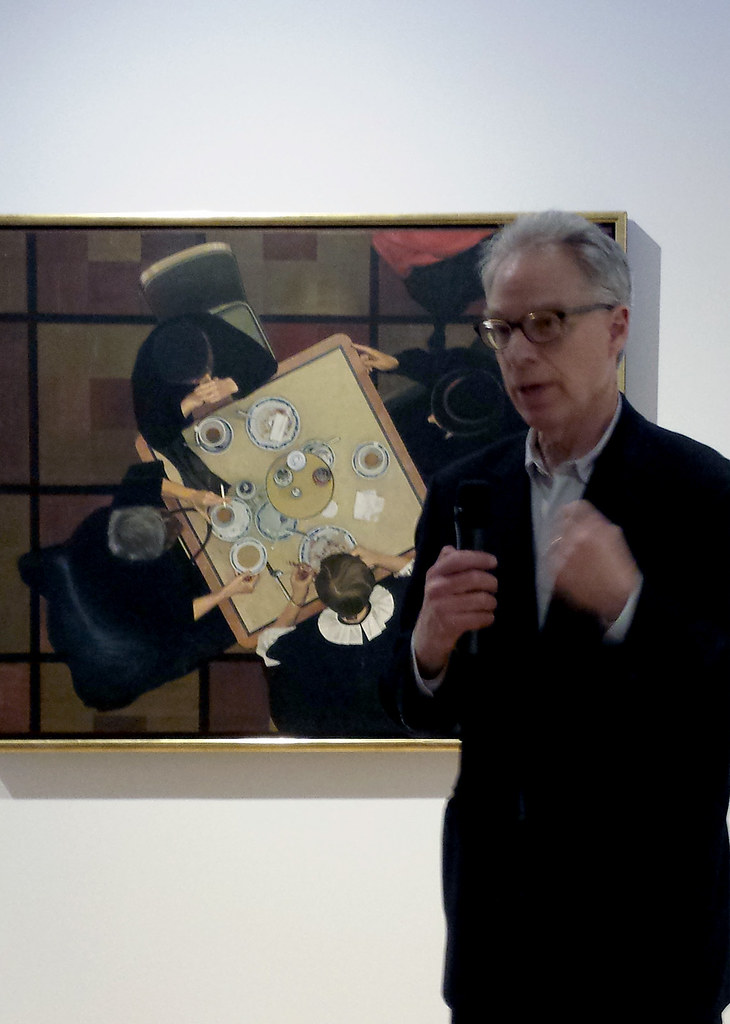
[Curator Patterson Sims in front of
Automat, 1966-68/ ca. 1971, one of the highlights from the show.]
